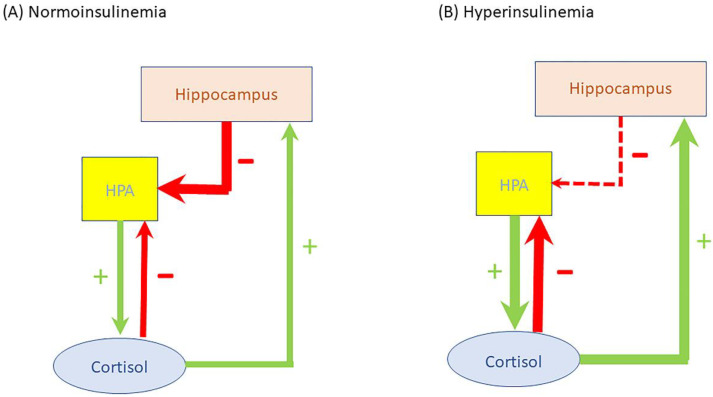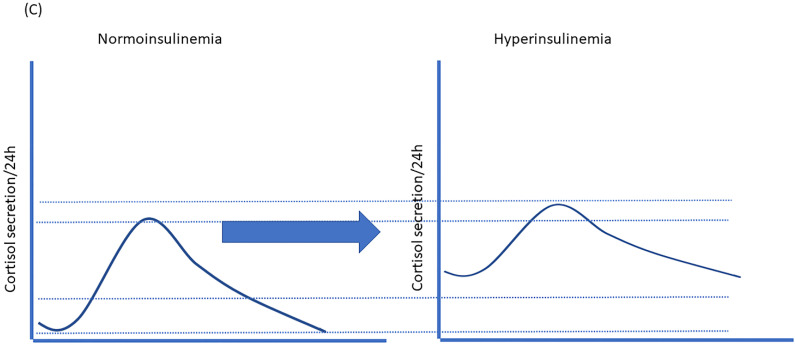Figure 6.
Insulin can cross the blood brain barrier and exert direct effects at the hippocampus. In normoinsulinemic conditions, the hippocampus has inhibitory control over the HPA axis preventing excess cortisol release. Cortisol in turn has negative feedback on the HPA activity and positive feedback on the hippocampus (A). In hyperinsulinemic conditions the inhibitory activity of the hippocampus on the HPA axis is decreased (releases “the brake”). Consequently, the homeostatic setpoint (the predetermined level) of the HPA axis activity will change: cortisol secretion per 24 h increases (compared to normoinsulinemic conditions) and thereby induces a state of “functional hypercortisolism” (B). The exaggerated cortisol secretion per 24 h during hyperinsulinemia can be explained by increased forward drive to the HPA axis, and/or reduced sensitivity of the HPA axis to negative feedback by cortisol (C). Stimulatory effects are shown in green and inhibitory effects are shown in red. See text for more details.


